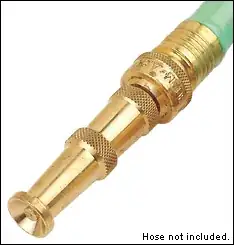I bought a hose nozzle that looked robust (though made mainly of plastic) last year and let it sit out over the winter (temperatures get down to -30 ºC). This spring, naturally, the nozzle was leaking from all its seams. I bought another one of the same kind with the plan to bring it in before the really cold weather starts. To my dismay, the nozzle started leaking this week after we had some mildly frosty nights.
Any thoughts on what I should look for in a nozzle so that it'll withstand the frost? I don't expect it to survive the winter. I am thinking I need a nozzle made of all metal, possibly with metal seals.
